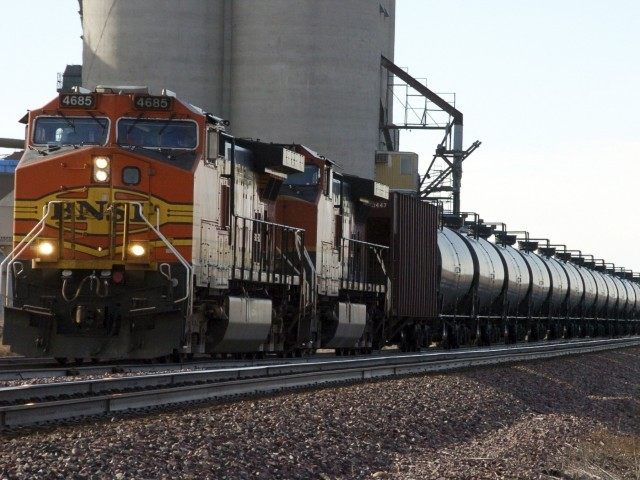After a series of spectacular oil-train crashes and accompanying horrific fires, Reuters reported that the United States and Canada are in the finalization stage before announcing that the current safety upgrade for rail-tankers will be suspended and new higher flammability requirement will be adopted railroad oil-tanker safety designs.
Oil pipelines are designed to carry volatile crude safely through predominantly unpopulated areas. But with the Obama Administration teaming up with environmentalists to limit the growth of US fossil fuel production, pipeline construction has come to a halt, despite North American oil production doubling in the last 6 years. Since railroads are designed to carry freight and passengers through as many populated city centers as possible, trains 6 years ago seldom pulled tank cars loaded with crude oil. But due to the lack of pipeline capacity, hundreds of hundred car oil-trains are moving most of the new oil production.
Roughly 92,000 U.S. DOT-111 rail-tank-cars that carried cargoes of non-explosive products like corn syrup sweeteners and industrial chemicals are being used to haul crude oil. According to Bloomberg, the railroads have adopted a $5.2 billion spending program to meet a Canadian standard called CPC-1232 to meet higher flammability standards. About 14,000 tank cars have been upgraded by thickening 7/16ths of an inch of high tensile strength steel for tank car shells with 9/16ths of an inch steel, and by adding top-fitting protections and a pressure-relief system.
Despite the strengthening, nine of the tank cars that ruptured in Saturday’s most recent Northern Ontario crash and fire were CPC-1232s. The Canadian Transportation Safety Board concluded that the tank cars involved in a February 14 train derailment complied with the upgraded CPC-1232 standards that began being instituted in Canada last year for new tank cars carrying crude and other flammable liquids. In both cases, the DOT 111 and CPC-1232 both still “performed similarly” in an accident to those involved in the derailment in Lac-Megantic, Quebec that killed 47 people and leveled 40 buildings two years ago.
“This was supposed to be a better quality car. So far we haven’t seen that better performance,” Rob Johnston, a senior Transportation Safety Board official, said in a February 23 interview with The Associated Press.
With three derailments by Canadian National Railway Co. in the last 30 days, Canadian Transport Minister Lisa Raitt has been under tremendous pressure by the Canadian House of Commons to increase the requirements for strengthening tank cars authorized to haul crude oil and other flammables.
Minister Raitt, after being grilled at a Parliamentary hearing, told reporters, “We’ve been working really diligently with the U.S….in terms of trying to get to the new tank safety standard, and I think we’re really close to announcing what that looks like.” She added that the new multi-lateral agreement with the U.S. will go farther than CPC-1232.
Two days after the Ontario derailment, tank cars loaded with crude that met the CPC-1232 standard derailed in a West Virginia snow-storm, sparking a horrific fire and causing the Department of Homeland Security to evacuate of hundreds of families.
U.S. Transportation Secretary Anthony Foxx has been meeting with safety officials in Canada since December to discuss a new tank car design. Secretary Fox has stated that Transportation Department officials recently sent a proposal for new tank car standards to the White House budget office for review.
The Canadian government is committed to improving the safety of railroad tank cars. But they warn the Obama Administration that if Keystone XL and other pipelines are not built, Canadian and U.S. oil will continue to be shipped by rail tank cars.

COMMENTS
Please let us know if you're having issues with commenting.